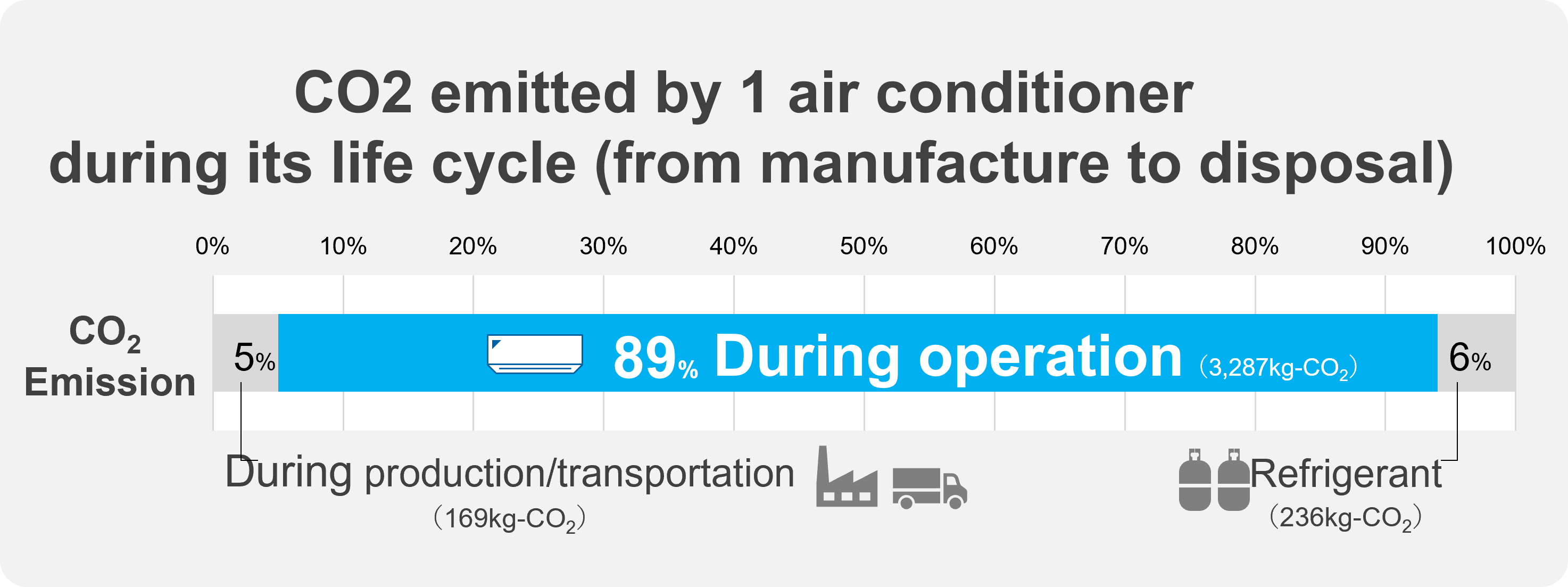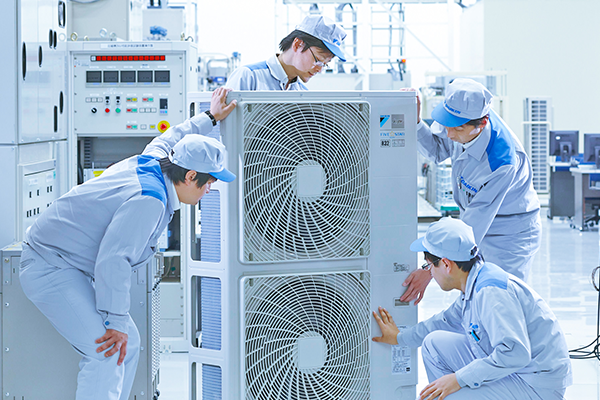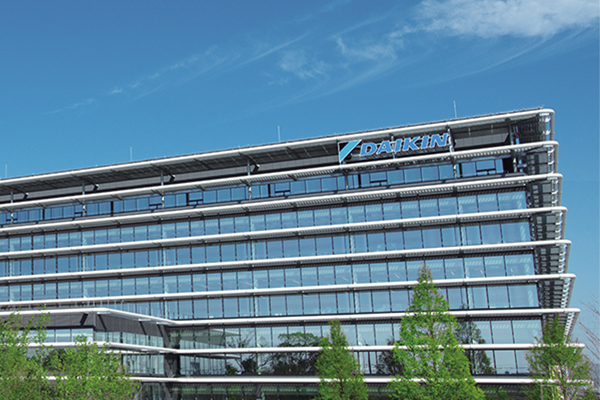CARBON NEUTRALITY
WITH AIR CONDITIONERS
Homes, schools, shops, offices—everywhere we go, air conditioners surround us.
They are a vital part of the infrastructure that ensures we live comfortably and
healthily.
When we look at the world, it's clear how pivotal air conditioners have been in human
progress,
especially in supporting the lives and economic activities of people in hot climates.
However, in some regions, the electricity consumed by air conditioners during scorching
summer days
can account for 50% to 60% of the total power used in homes and buildings, significantly
impacting
the environment.
Air conditioners are estimated to use about 10% of the world's electricity.
More importantly, the use of fossil fuels to generate this power means air conditioners are
responsible for a considerable share of greenhouse gas emissions.
Furthermore, as emerging countries develop, the number of air conditioners worldwide is
expected to
triple by 2050, creating an immense demand for electricity comparable to the current needs
of Europe
and Japan.
As an air conditioner manufacturer operating in over 170 countries and regions, Daikin bears
great
responsibility for the global environment.
Therefore, we are committed to reducing CO2 emissions throughout the entire
lifecycle of
our air conditioners.
Recognizing that air conditioners emit significant CO2 during use, Daikin seeks
to
collaborate with you to achieve carbon neutrality by sharing insights on how to use air
conditioners
more efficiently to save energy and electricity.
Carbon Neutrality with Air Conditioners
Carbon Neutrality and the Impact of Air Conditioning on the Environment
What is carbon neutrality?
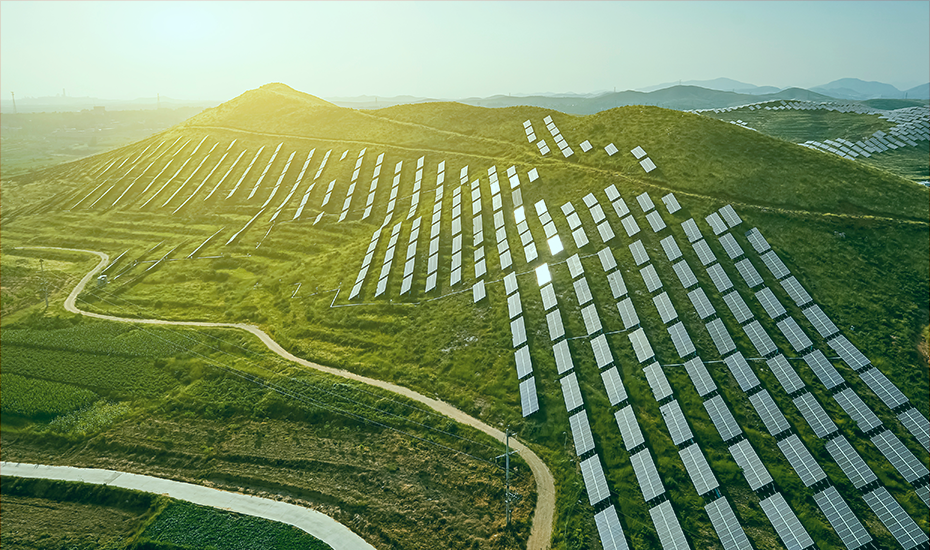
Carbon neutrality (decarbonization) is an initiative to reduce to net zero the amount of greenhouse gas emissions (such as CO2) contributing to global warming.
A great amount of energy is needed to sustain our convenient and comfortable lifestyles. However, fossils fuels, such as oil and gas, are largely used to generate this electricity, and they emit massive amounts of greenhouse gases. To protect against global warming, carbon neutrality aims to reduce these emissions to net zero.
More than 150 countries and regions*1 aim to achieve carbon neutrality by 2050 or other timelines.
- *1
- Current as of COP26 (26th Session of the Conference of the Parties to the United Nations Framework Convention on Climate Change)
What will happen if greenhouse gases continue to increase?
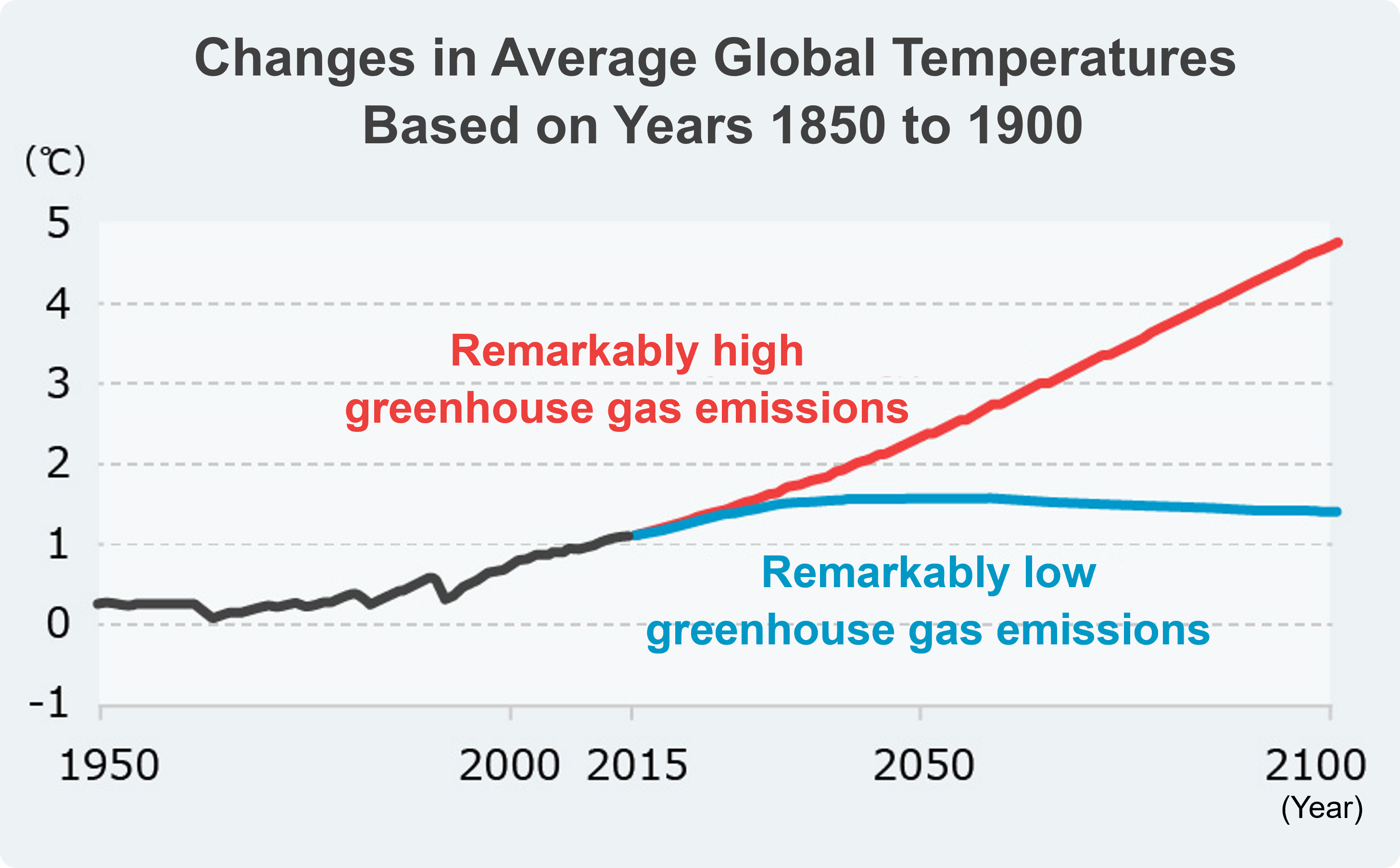
Created in reference to the IPCC “Sixth Assessment Report, Working Group 1, Report, Climate Change 2021: Physical Science Basis” Summary for Policy Makers (SPM), (Issued May 12, 2022) SPM.8 (a).”
If efforts for carbon neutrality prove insufficient, global warming will progress even further, and reports indicate that the average global surface temperature could rise to nearly 5℃*2 by the end of the 21st century.
Global warming is expected to have an immeasurable impact on our lives with an increase in the number of deaths from heat waves and heat strokes, water damage that includes torrential rains and floods, lower agricultural yields, elevated sea levels, and increased risk of infectious diseases.
- ※2
- IPCC “Sixth Assessment Report, Working Group 1 Report, Climate Change 2021: Physical Science Basis, Summary for Policy Makers (SPM), (Issued May 12, 2022)”
Risks Posed by Rising Global Temperatures
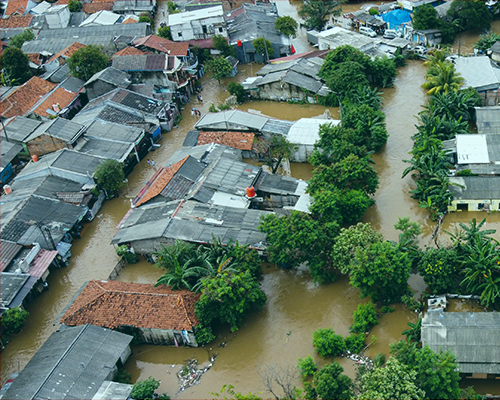
Water Damage

Lower Agricultural Yields
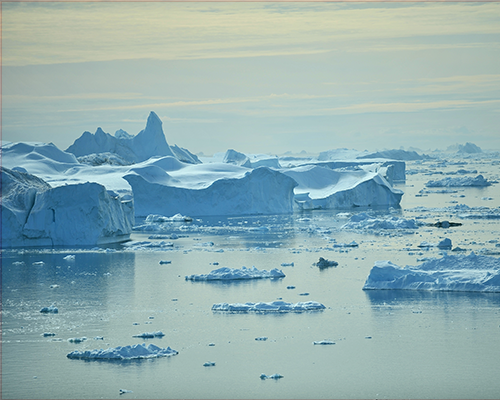
Elevated Sea Levels
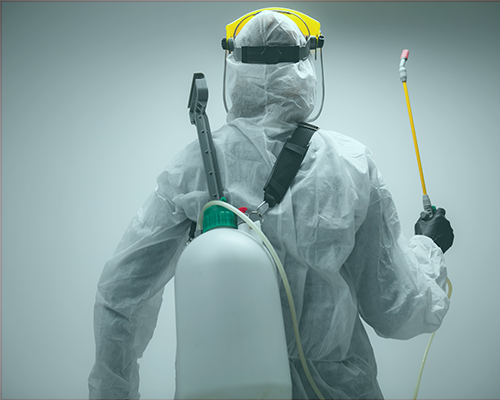
Proliferation of Infectious Diseases
How do air conditioners impact the environment?
Air conditioners have made our lives safer and more comfortable. In particular, they play a major role in the lives and economic development of people living in hot countries and regions. At the same time, air conditioners account for a large part of the electricity consumed during the hot summer months. For example, electricity consumption reaches approximately 60%*3, for homes and 50%*4 for offices in Japan during peak summer season. Moreover, with the growth of emerging countries, the number of air conditioners and demand for electricity caused by this growth is expected to triple*5 by 2050, raising concerns that the increase in greenhouse gases (including CO2) will place an even greater burden on the environment.
Despite their significant impact on the environment, air conditioners are essential to people's lives. For this reason, as the number of the air conditioners increase, Daikin is promoting initiatives to minimize their environmental impact.
- *3
- Ministry of Economy, Trade and Industry (METI) of Japan "Summertime Energy-Saving Options (for Households) (2015)"
- *4
- Ministry of Economy, Trade and Industry (METI) of Japan "Summertime Energy-Saving Options (for Business Operators)(2015)"
- *5
- International Energy Agency (IEA) "The Future of Cooling"

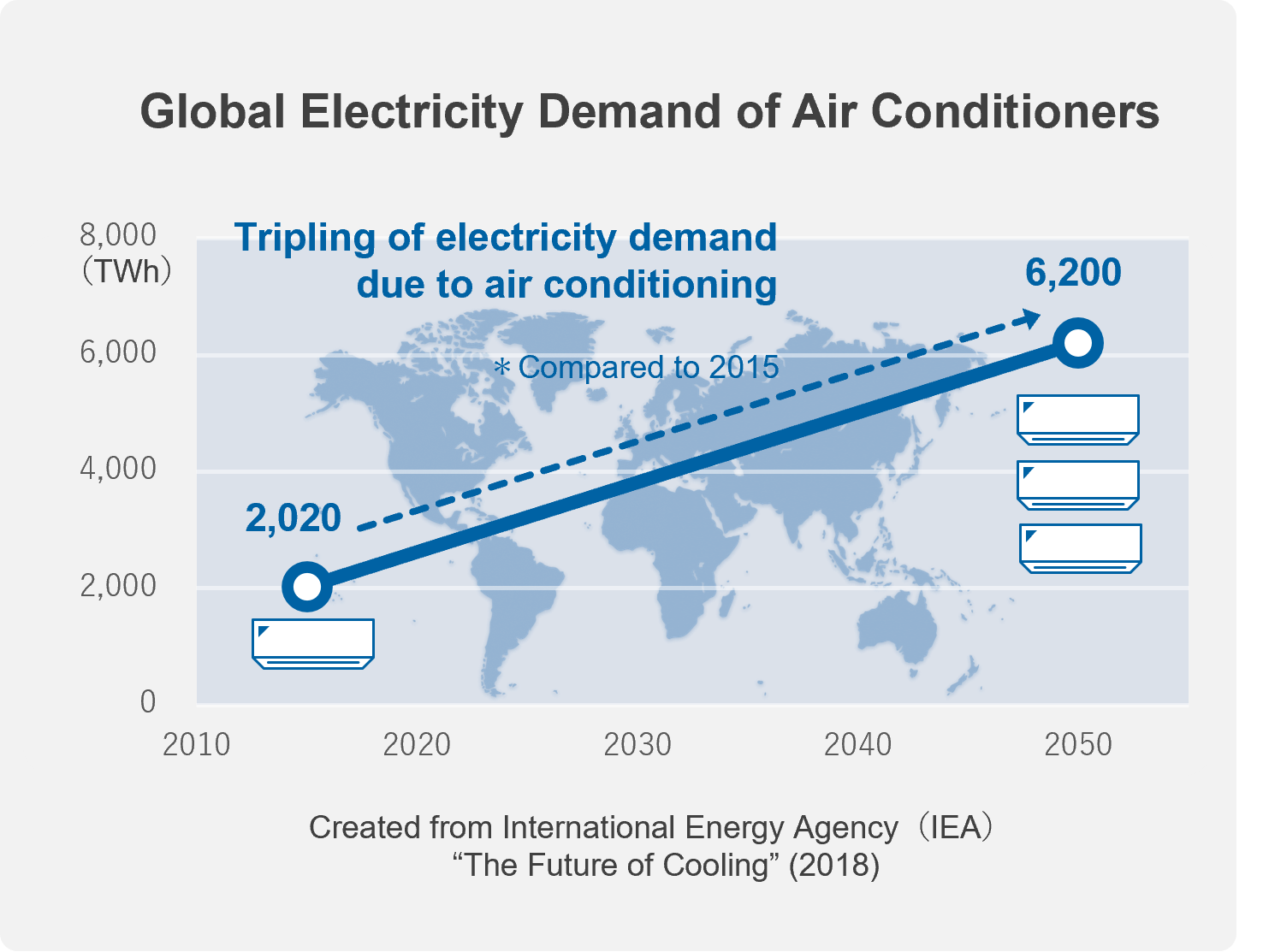
What role have air conditioners played in society?

Air conditioners are widely used around the world and have contributed greatly to economic development, particularly in hot countries and regions. Singapore, for example, is one of the most developed countries in Southeast Asia. Singapore's founding father, the late former Prime Minister Lee Kuan Yew, once said, “The most influential invention of the last 100 years is the air conditioner. Singapore's development would have been impossible without it.” In an environment where it was too hot to concentrate on work, he decided to install air conditioners in the buildings where civil servants worked, increasing people's productivity and creating an efficient government.
Similarly, the climate in the United States, which has one of the largest land masses in the world, differs considerably between north and south. Because of its extremely hot, humid summers, the South had always lagged behind the North, both economically and in terms of population, but the adoption of air conditioners brought about needed relief to the South and attracted industries and people for greater regional prosperity and comfort. In this way, air conditioners have served an essential part of people's lives around the globe.
Extent of Daikin's Role and Efforts for Carbon Neutrality
Air conditioners, including Daikin's products, consume roughly 10% of the world's electricity
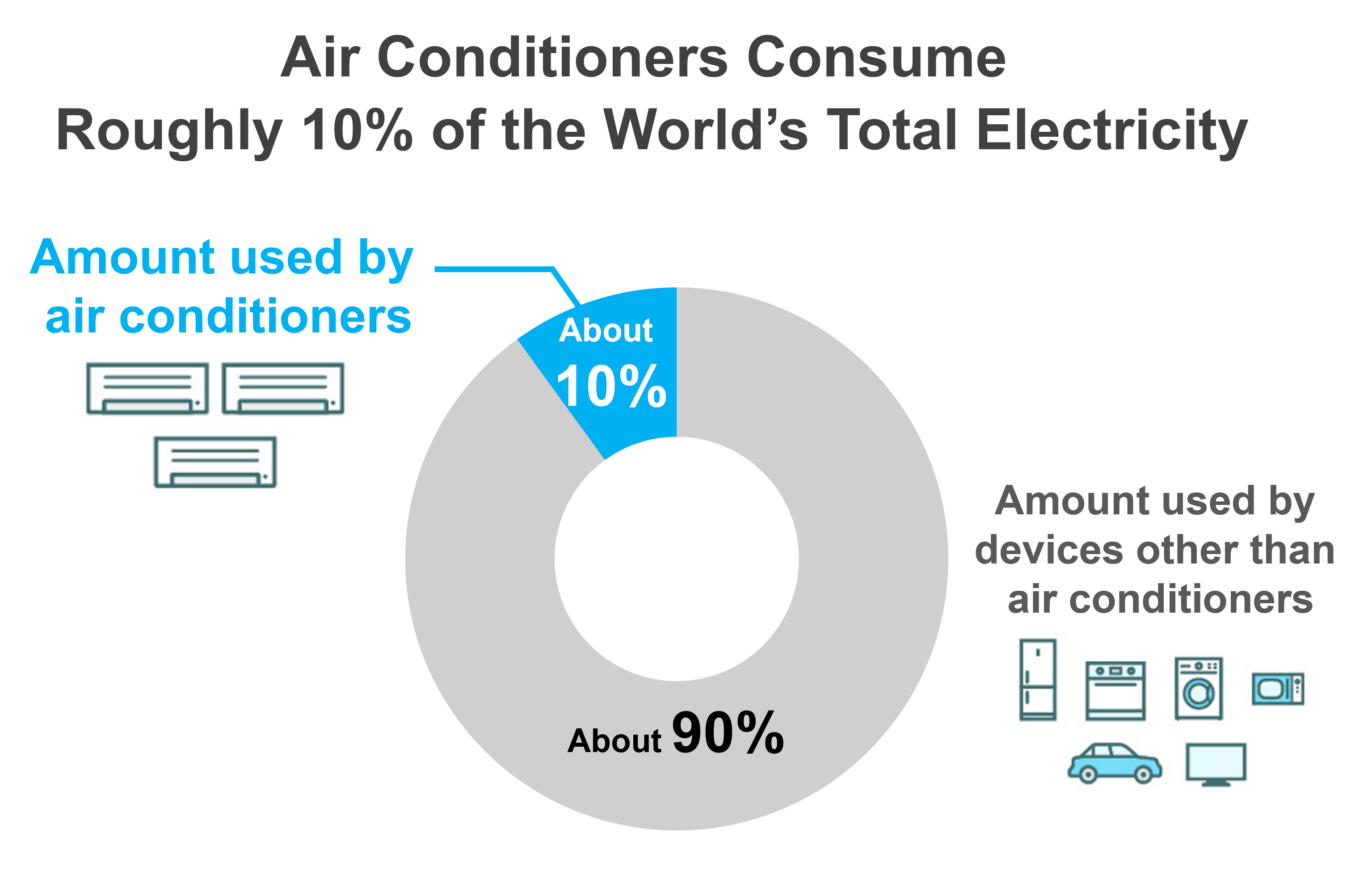
From smartphones to cars, all things around us in modern society are powered by electricity. We can't even imagine living without it. However, because electrical power is typically generated by fossil fuels, the generation of electrical power produces large amounts of CO2.
Currently, air conditioners are reported to consume roughly 10% of all electricity in the world*6, and naturally, many of the air conditioners used in homes and buildings are made by Daikin.
As an air conditioning manufacturer with extensive business operations worldwide, Daikin has an important responsibility to help protect the environment, and we believe that it is a responsibility that Daikin is uniquely suited to fulfill.
- *6
- Estimates by Daikin based on IEA/UNEP “Cooling Emissions and Policy Synthesis Report”
Daikin's goal for carbon neutrality for 2050

Because Daikin has a major role to play in curbing global warming, we are moving forward with carbon neutrality initiatives to achieve our goal for net zero emissions in 2050. With 2019 as the base year, we aim to reduce net greenhouse gas emissions*7 by 50% or more in 2030 compared to emissions without countermeasures, or business as usual (BAU), before reaching our goal of net zero emissions in 2050.
- *7
- Defined as the total after subtracting our contribution to GHG emissions reductions from our total greenhouse gas emissions.
What is Daikin doing for carbon neutrality?
Daikin has many technologies for air conditioners in support of carbon neutrality, and these technologies are constantly being refined to further improve energy efficiency and help mitigate the effects of global warming. Rather than monopolizing them for our own use, we focus on activities that make these technologies available to other air conditioner manufacturers as part of our contribution to reduce global CO2 emissions.
Daikin AC technologies contribute to carbon neutrality around the world

Inverter Technology
Inverters are used to control the rotation speed of the motor of air conditioners according to room temperature. By finely adjusting the heating and cooling capacity, more than 50% in energy savings can be achieved.
View More
Low GWP Refrigerant
Refrigerant is the gas that carries heat inside an air conditioner and is a substance with a greenhouse effect ranging from hundreds to thousands of times more potent than that of CO2. Daikin aims for global adoption of the low global warming potential (GWP) refrigerant R32 and has promoted its use worldwide by allowing other companies to exercise free use of its designated patents related to R32 air conditioners.
View More
Heat Pump Technology
A heat pump is a technology that takes heat collected from the atmosphere, transfers it using a small amount of electricity, and uses it for heating. For example, a heat pump type air conditioner can convert the input of one thermal energy and obtain approximately six times as much in thermal energy.
View MoreCarbon Neutrality Aiming with Everyone
All of us can work toward carbon neutrality by considering how we use air conditioners.
The total amount of CO2 that an air conditioner emits over its lifetime is 3,692 kg*8. As a manufacturer, Daikin is committed to reducing emissions when manufacturing and transporting air conditioners. However, 89% of the total amount of emissions*8 occurs during operation. This means that further CO2 reductions are possible by being smart about conserving energy when running an air conditioner. For example, you can expect significant energy savings just by setting the temperature sensibly and cleaning the filter regularly. For carbon neutrality, we can all start from today by using our air conditioners in a comfortable and environmentally conscious fashion.
- *8
- Estimated by Daikin for room air conditioners.

